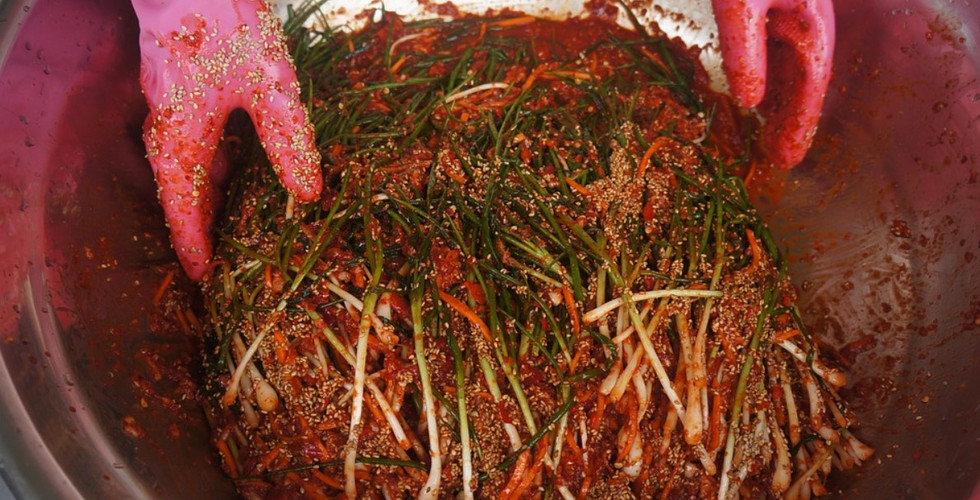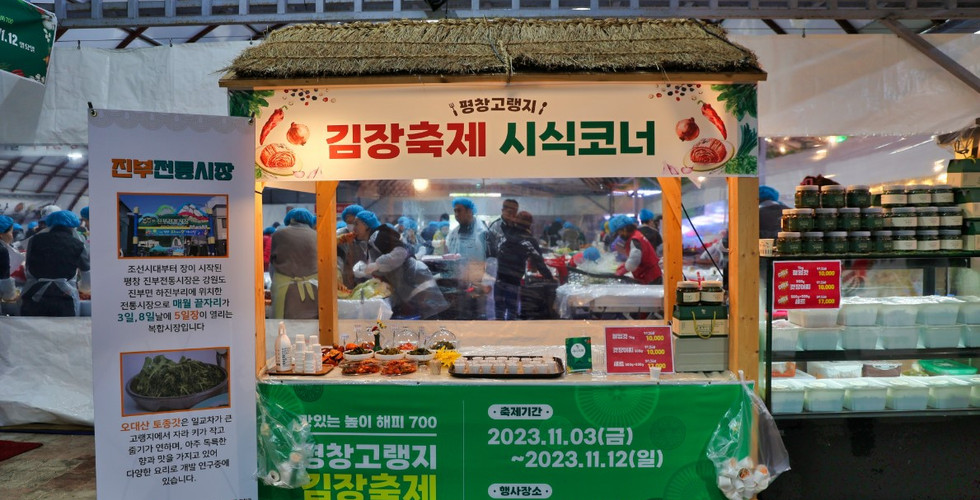The Fermented Flavor That Captivated the World, Korean Gimjang
- zone tp
- 19 hours ago
- 2 min read
※ TriPriend app offers discounts and free vouchers for a variety of Seoul cafes, restaurants, and facilities.
To download TriPriend app, please click the banner below.

Kimchi, now known and loved beyond Korea worldwide

For centuries, it has graced Korean tables with each household’s unique recipe.

Gimjang refers to the practice of making a large quantity of this kimchi to enjoy throughout the winter.

How about learning about Gimjang culture and experiencing it firsthand this winter?

Let's begin😎

Gimjang refers to the practice of making a large quantity of kimchi from late autumn to early winter. This unique culture originated from the need to preserve vegetables in the past, when fresh food was difficult to obtain, by salting or fermenting them to last through the winter. Gimjang continues to foster community by bringing together family, relatives, and neighbors to prepare and share kimchi. More than just making food, it is valued as a culture of sharing, and in 2013, it was inscribed on the UNESCO Intangible Cultural Heritage of Humanity list.
While the scale and recipes vary from household to household, the process involves salting fresh cabbage and preparing a seasoning mix with red pepper powder, garlic, ginger, green onions, shredded radish, and salted seafood, which is carefully spread between the cabbage leaves. After Gimjang is complete, it is common to enjoy freshly made kimchi or salted cabbage along with the seasoning mix, often accompanied by boiled pork.

Gimjang has evolved over a long history into its present form. Records indicate that as early as 1409, storage facilities for Gimjang existed, showing how deep its roots run. In the early days, kimchi was mainly made as white kimchi or dongchimi, without red pepper. After the Imjin War, red pepper was introduced, giving rise to the red kimchi we know today. Seasonings like salted seafood were added to enhance the flavor, creating the delicious kimchi enjoyed now.
Although overall kimchi consumption has declined, many households still make kimchi themselves to preserve the memories and nostalgia of their family’s unique recipe. Since Gimjang originated from an agrarian culture, it can be difficult to maintain traditional methods in modern times. However, Gimjang will continue to uphold tradition while evolving within contemporary food culture.

At the Pyeongchang Highland Gimjang Festival, you can participate in a hands-on Gimjang experience. From salting and washing the cabbage to preparing the seasoning and mixing it all together — ever felt it’s too difficult to do at home? Here, you can enjoy making kimchi with ingredients prepared for you. The festival uses Pyeongchang Highland Cabbage, grown in high-altitude areas with ample sunlight and low night temperatures, giving it a firm texture and rich, nutty flavor.
Registration is available online or on-site, and you can choose between cabbage kimchi or altari radish kimchi. Almost all ingredients are locally grown in Pyeongchang, allowing you to make safe and delicious kimchi yourself. On-site, you can also enjoy dishes that pair perfectly with kimchi, such as boiled pork and dumpling soup, experiencing the warmth and taste of the Gimjang season with neighbors.

Address: 1958-27 Odaecheon-ro Jinbu-myeon, Pyeongchang-gun, Gangwon-do
Website: https://gimjang700.co.kr/
Work: Nov 5th – 17th



























































